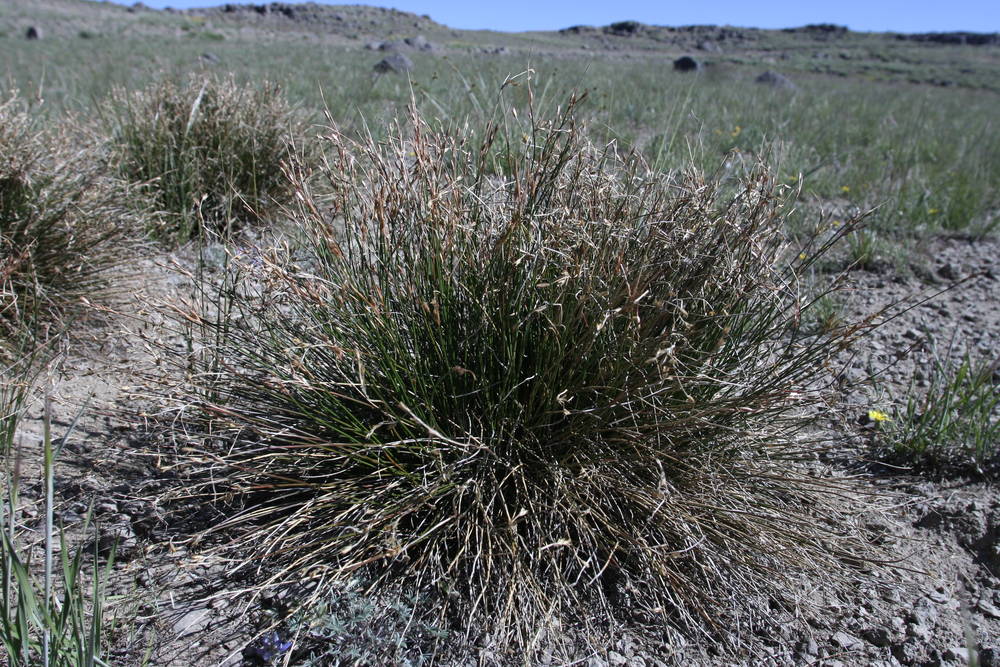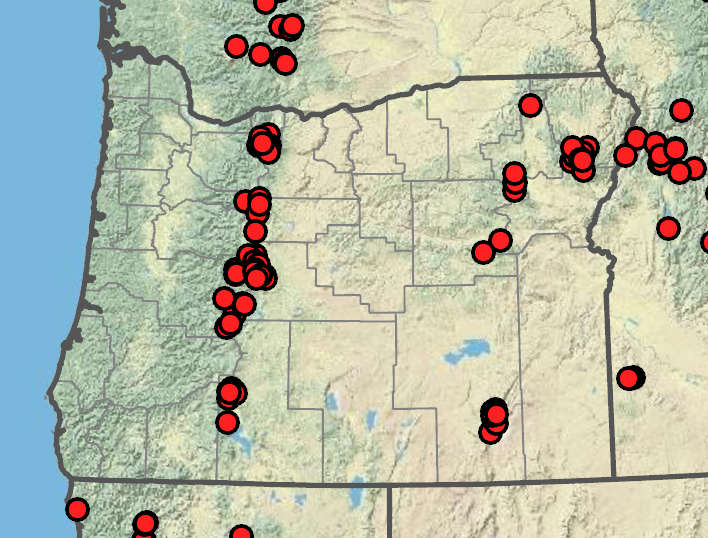Juncus howellii
Juncus drummondii
Howell's rush
Drummond's rush, threeflower rush
flat; grass-like, blue-green; up to 4.5 mm wide;
auricles absent or 0.2– 2 mm.
lacking blades; the blades reduced to vestigial awns;
distal sheaths 2–6 cm, light brown.
(2)5–20 clusters; clusters usually 2–8-flowered.
a loose cluster of 1–3(5) flowers;
inflorescence bracts erect and stem-like, sometimes longer than inflorescence.
tepals 6, dark brown, papillose; inner usually longer than the outer;
stamens 6;
filaments 0.6–1.1 mm;
anthers 1.2–2.6 mm;
styles 1.2–3.2 mm.
tepals 6, brown to dark brown;
stamens 6;
filaments 0.5–1.3 mm;
anthers 1–1.6 mm;
styles 0.1–0.25 mm.
obovoid; shorter than the tepals, brown; acute, 3-chambered.
4.5–8 mm; longer than or equaling the tepals, brown to dark brown;
apices notched, 3-chambered.
slender, 0.6–1 × 0.25– 0.3 mm;
body 0.4–0.6 mm; tail 0.1–0.3 mm, 1 or 2 tails at least half the length of the seed body.
(0.7)1.2–2.3 × 0.2–0.3 mm;
bodies 0.5–0.6 mm, striate; tails prominent, 0.4–0.9 mm.
Juncus howellii
Juncus drummondii
Springs, gravel bars, wet slopes, peatlands. 600–2200m. BW, Casc. CA, ID, WA. Native.
Auricle characters are occasionally unreliable, so this species is best separated from J. orthophyllus and J. regelii by the intermediate length of the tail on the seed, with one or both seed tails about half as long as the seed body. Juncus orthophyllus has apiculate seeds without a tail, and J. regelii has seed tails approximately as long as the seed body.
Montane, subalpine, and alpine meadows, damp slopes, swales, gravel bars, springs, pumice. 700–2800 m. BR, BW, Casc. CA, NV, ID, WA; north to AK, southeast to NM. Native.
This species sometimes grows with the similar J. parryi, which has elongate leaf blades resembling stems, and often favors drier habitats.
Peter Zika
Peter Zika
- Local floras:
CA,
OR,
WA
- Local Web sites:
CalFlora,
CalPhotos,
Flora NW,
PNW Herbaria
WildflowerSearch
iNaturalist (observations)
USDA Plants Database
- LBJ Wildflower Center
- SEINet
- Plants of the World Online
- Encyclopedia of Life
- Wikipedia
- Google Image Search
- Local floras:
BC,
CA,
OR,
WA
- Local Web sites:
CalFlora,
CalPhotos,
Flora NW,
PNW Herbaria
WildflowerSearch
iNaturalist (observations)
USDA Plants Database
- LBJ Wildflower Center
- SEINet
- Plants of the World Online
- Encyclopedia of Life
- Wikipedia
- Google Image Search


